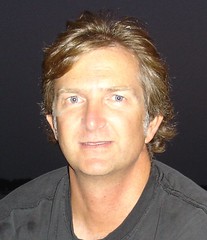
We should all care about the water quality of Geist Reservoir. We drink it. We swim in it. And it affects our property values.
Unfortunately, toxic blue-green algae (also called cyanobacteria) love Geist Reservoir as much as we do. The combination of shallow and calm water, moderate seasonal temperatures, sunlight, and a high nutrient load make Geist an ideal environment for toxic algae.
Nutrient load, the mass of nitrogen and phosphorus that drain into a waterway, comes from leaves, grass clippings, topsoil runoff, manure, septic tanks, and agricultural and residential fertilizer runoff. Algae are particularly fond of phosphorus.
Given a high nutrient load, algae will outcompete all other forms of aquatic vegetation in our reservoir. As it blooms, algae prevent sunlight from penetrating the water and inhibit growth of beneficial native aquatic plants. At night, algae consume dissolved oxygen in the water and can kill fish. Toxic algae can cause serious illness to pets, waterfowl, and humans. It looks bad, smells bad, limits reservoir recreation, and increases the treatment cost of our drinking water.
So while we can’t change some of conditions that affect the reservoir’s water (like the weather), we can reduce the reservoir’s nutrient load. An important first step is to change how we fertilize our lawns.
Most established lawns in Indiana already have enough phosphorous. By purchasing phosphate free lawncare products and services we can significantly reduce the reservoir’s nutrient load. Your lawn will not know the difference.
HERE’S HOW YOU CAN HELP – this spring, if you fertilize, please buy the bag with a “0” in the middle. For example, a bag with the label 29-0-5 contains no phosphorus. (The three numbers on a bag of fertilizer identify the nitrogen, phosphorus, and potassium content). If you use a lawncare service, request a zero phosphate treatment. Waterfront properties should not fertilize within 15 feet of the water’s edge. Finally, consider replacing one fertilizer application with a mechanical aeration.
The EPA estimates that only 35% of lawn fertilizer actually makes it to the lawn. The rest is vaporized or leaches into the water. Zero phosphate fertilizer is an essential first step to a cleaner reservoir.
To learn about what else you can do to improve our reservoir, visit the Geist Watershed Alliance website at www.atGeist.com/water.
Your community thanks you.





